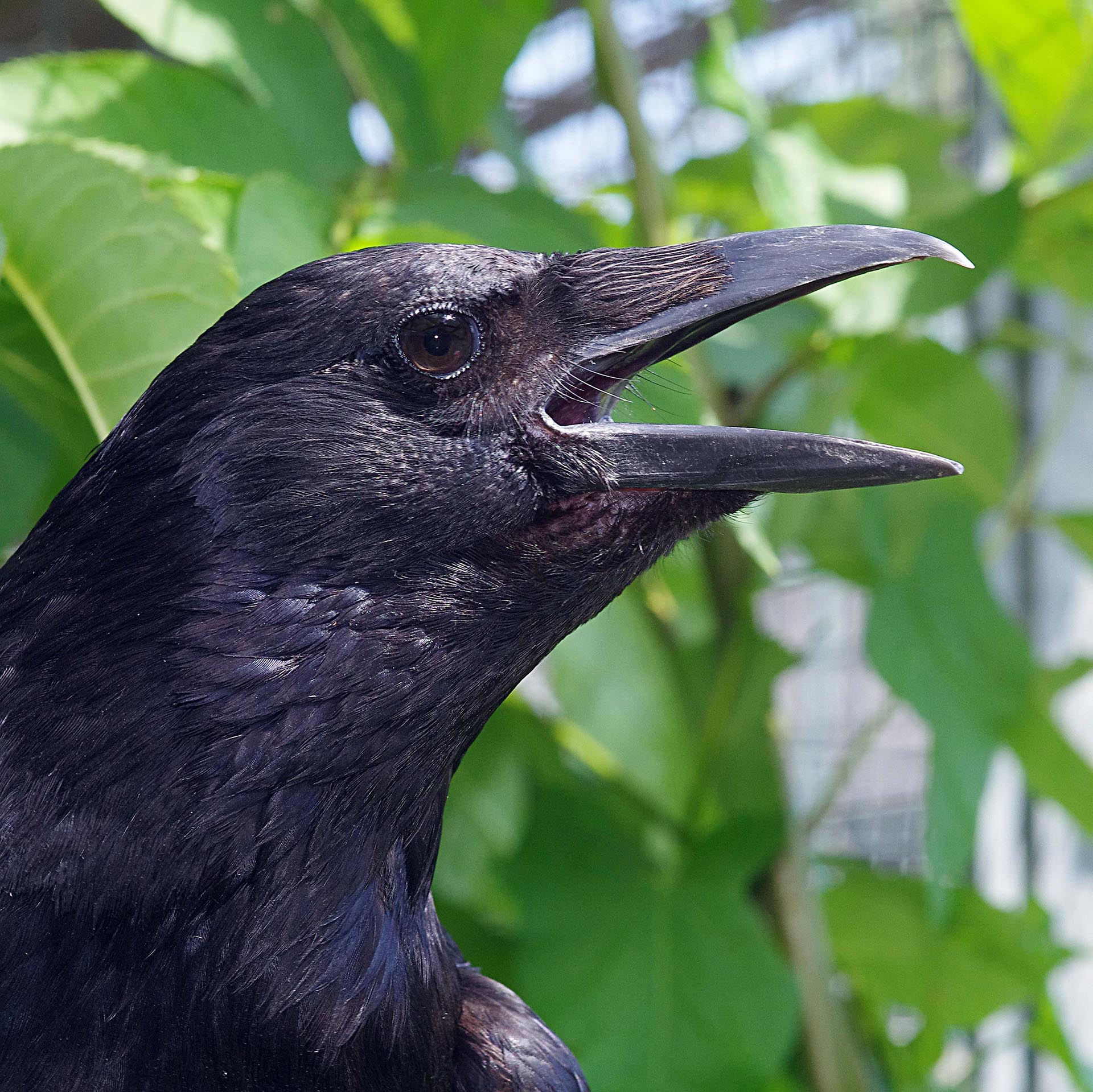Press Releases Archive
23.05.2024
Crows can deliberately plan how many calls to make
Using a behavioral experiment, University of Tübingen research team observed corvids count their vocalizations when calling
In a behavioral experiment crows can learn to produce a set number of calls. This involves them planning in advance: from the sound of the first call in a numerical sequence it is possible to predict how many calls the crows will make. A research team consisting of Dr. Diana A. Liao, Dr. Katharina F. Brecht and assistant professor Lena Veit led by Professor Andreas Nieder from the Institute of Neurobiology at the University of Tübingen has established this. Their study has been published in Science.
Carrion crows, which belong to the group of songbirds, are not known for the beauty of their song but for their formidable learning ability. For instance, earlier studies have shown that the birds understand counting. “In addition, they have very good vocal control. They can control precisely whether they want to emit a call or not,” reports Andreas Nieder. Together with his team he undertook behavioral experiments with three carrion crows to study whether they can apply these abilities in combination.
Forming an abstract concept
The birds were given the following task: on seeing a selection of Arabic numerals or on hearing specific sounds they had to produce one to four calls as appropriate and then conclude their call sequence by pecking on an enter key. “All three birds succeeded in this. They were able to count their calls in sequence,” says Nieder. The response time between presentation of the stimulus and emitting the first call in the answer was relatively long and became longer the more calls were required. The length of the delay was unaffected by the nature of the stimulus, visual or auditory. “This indicates that, from the information presented to them, the crows form an abstract numerical concept which they use to plan their vocalizations before emitting the calls,” Nieder explains.
This finding is reinforced by analysis of the individual crows’ calls in a sequence. “Using the acoustic properties of the first call in a numerical sequence we could predict how many calls the crow would make,” reports Nieder. The crows’ behavior was not however entirely without errors. “Counting errors, such as one call too many or one too few, arose through the bird losing track of the calls already made or still to be produced. We are also able to read out these types of errors from the acoustic properties of the individual calls.”
The ability to produce a volitional number of vocalizations demands a highly-developed combination of numerical competence and vocal control. “Our results show that humans are not the only ones who can do this. In principle it also opens up sophisticated communication to the crows,” says Nieder.
Publication:
Diana A. Liao, Katharina F. Brecht, Lena Veit, Andreas Nieder: Crows “count” the number of self-generated vocalizations. Science, https://doi.org/10.1126/science.adl0984
Contact for press:
Eberhard Karls Universität Tübingen
Public Relations Department
Oliver Häußler
Temporary Director
Janna Eberhardt
Research Reporter
Telefon +49 7071 29-77853
Fax +49 7071 29-5566
janna.eberhardtspam prevention@uni-tuebingen.de
All press releases by the University of Tübingen

